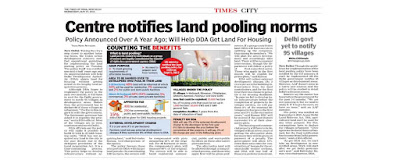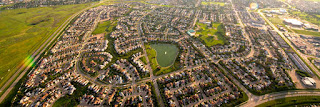Imagine driving in Delhi without getting trapped in traffic, being able to drift around freely, knowing where to park and hopping on the public transport without losing time, energy and patience.
Let us see where we are and where we have to go!!
Challenges:
Metropolitan Cities like Delhi, are the places where 50% of the world’s population live today, Responsible for 75% of its energy consumption and 80% of its carbon emissions - and cities are growing. Cities face huge challenges: congestion, pollution, blackouts, crime, debt and rising costs - while competing with each other for investment, jobs and talents.
Cities need to become smarter: more efficient, sustainable and liveable.
5 Basic steps to make a city smart:
1. Vision: setting the goal and the roadmap to get there
2. Solutions: bringing in the technology to improve the efficiency of the urban systems
3. Integration: combining information and operations for overall city efficiency
4. Innovation: building each city’s specific business model
5. Collaboration: driving collaboration between global players and local stakeholders
As cities grow and expand, so will urban transportation systems - increasing traffic congestion, threatening safety, wasting commuter time and valuable fuel, and impacting the environment. Cities are where traffic flows – cars, buses, subways and trains epitomise city life.
Cities need to make mobility smarter: more efficient, reliable and green. green. Urban populations will nearly double by 2050 accounting for 70 percent of the world’s population. Undoubtedly, transportation systems will be impacted, increasing congestion, threatening safety, delaying commuters, burning up valuable fuel, and harming the environment. To meet current and anticipated challenges, Smart Cities around the world are finding Smart Mobility solutions for integrated city management—improving mobility for citizens through operational efficiency and smart information. Reduce urban traffic congestion and improve air quality through centralized, real-time adaptive traffic management.
As things stand, the urbanization agenda is: urban renewal; rejuvenation and the implementation of smart city concept; While renewal and rejuvenation are relatively easier to grasp, there appears to be only an evocative imagination in the public mind as to what the contours of a smart city could be. So, here are few suggested attributes that may well describe, and to some extent define a smart city.
Information, communication, and technology (ICT)-enabled governance: The international and domestic big daddies of the information technology (IT) world have, with their aggressive presentations, virtually hijacked the smart city definition to only mean IT-enabled administration and governance. Often referred to as "smart government", the use of integrated technology platforms that are easily accessible across various devices is certainly key to providing access, transparency, speed, participation and redressal in public services.
Efficient utilities - energy, water, solid waste and effluents: This area is often the most talked about after IT. Smart meters, renewable energy, energy conservation, water harvesting, effluent recycling, scientific solid waste disposal methods etc.. all clearly mark the hallmark of a smart city.
Meaningful PPPs: The creative use of public-private partnerships (PPPs) is a key attribute of the smart city concept. PPPs are to be used not only as a source of much-needed capital but also for the efficient delivery of utilities with agreed service-level standards. PPPs could range from health care to street lighting; and be used wherever there is a clear connection between the provision of a service and the ability to charge for the same - directly or even indirectly.
Safety and security: This aspect is high in public consciousness, especially with disconcerting news on the safety of women, road rage, robbery attacks on the elderly and juvenile delinquency. Clearly, networks of video cameras, brightly lit public areas, intensive patrolling and surveillance, identity-verified access, and rapid response to emergency calls are all on the expectations list.
Financial sustainability: The 74th Amendment to the Constitution (1992) enjoins towns and cities to "take charge of their own destinies". Nowhere is this more important than financial independence. This is only possible with elaborate and extensive tapping of all sources of revenue - property taxes, advertisements etc. coupled with astute collection of user-pay charges across the full range of utilities.
Citizen-participative local government: The enthusiastic participation of citizens in local issues needs careful designing of electoral and participative forums. The current apathy towards civic elections needs comprehensive reversal.
Sufficient social capital: Smart cities cannot be devoid of the appropriate levels of social infrastructure - like schools, hospitals, public spaces, sporting and recreational grounds and retail and entertainment venues. Along with a brain that works, and hands and legs that move, it must also have a heart that beats to the joys of daily living.
Transit-oriented habitats: "Walk-to-work" is the dream solution here. Nevertheless, conveniently networked public transportation with first- and last-mile connectivity’s in place, reduced motivation to use personal vehicles, use of electric cars, and bicycle paths are all in the expectation matrix.
Green features: Minimizing the carbon footprint and eco-friendliness are important. Parks and verdant open spaces, absence of pollution, use of renewables, conservation and recycling are mandatory. It has rooftop solar energy, electric cars and electric-powered bicycles.
India has 5,545 urban agglomerations. Class 1 towns (called cities) are those with a population of 100,000 and above. This should be the minimum population cut-off for a smart city. Achieving all the above-mentioned attributes may well be Utopian. So, maybe even if seventy percent of them are achieved, we should have no hesitation in declaring an urban habitation as a smart city.
Let us see where we are and where we have to go!!
Challenges:
Metropolitan Cities like Delhi, are the places where 50% of the world’s population live today, Responsible for 75% of its energy consumption and 80% of its carbon emissions - and cities are growing. Cities face huge challenges: congestion, pollution, blackouts, crime, debt and rising costs - while competing with each other for investment, jobs and talents.
Cities need to become smarter: more efficient, sustainable and liveable.
5 Basic steps to make a city smart:
1. Vision: setting the goal and the roadmap to get there
2. Solutions: bringing in the technology to improve the efficiency of the urban systems
3. Integration: combining information and operations for overall city efficiency
4. Innovation: building each city’s specific business model
5. Collaboration: driving collaboration between global players and local stakeholders
As cities grow and expand, so will urban transportation systems - increasing traffic congestion, threatening safety, wasting commuter time and valuable fuel, and impacting the environment. Cities are where traffic flows – cars, buses, subways and trains epitomise city life.
Cities need to make mobility smarter: more efficient, reliable and green. green. Urban populations will nearly double by 2050 accounting for 70 percent of the world’s population. Undoubtedly, transportation systems will be impacted, increasing congestion, threatening safety, delaying commuters, burning up valuable fuel, and harming the environment. To meet current and anticipated challenges, Smart Cities around the world are finding Smart Mobility solutions for integrated city management—improving mobility for citizens through operational efficiency and smart information. Reduce urban traffic congestion and improve air quality through centralized, real-time adaptive traffic management.
As things stand, the urbanization agenda is: urban renewal; rejuvenation and the implementation of smart city concept; While renewal and rejuvenation are relatively easier to grasp, there appears to be only an evocative imagination in the public mind as to what the contours of a smart city could be. So, here are few suggested attributes that may well describe, and to some extent define a smart city.
Information, communication, and technology (ICT)-enabled governance: The international and domestic big daddies of the information technology (IT) world have, with their aggressive presentations, virtually hijacked the smart city definition to only mean IT-enabled administration and governance. Often referred to as "smart government", the use of integrated technology platforms that are easily accessible across various devices is certainly key to providing access, transparency, speed, participation and redressal in public services.
Efficient utilities - energy, water, solid waste and effluents: This area is often the most talked about after IT. Smart meters, renewable energy, energy conservation, water harvesting, effluent recycling, scientific solid waste disposal methods etc.. all clearly mark the hallmark of a smart city.
Meaningful PPPs: The creative use of public-private partnerships (PPPs) is a key attribute of the smart city concept. PPPs are to be used not only as a source of much-needed capital but also for the efficient delivery of utilities with agreed service-level standards. PPPs could range from health care to street lighting; and be used wherever there is a clear connection between the provision of a service and the ability to charge for the same - directly or even indirectly.
Safety and security: This aspect is high in public consciousness, especially with disconcerting news on the safety of women, road rage, robbery attacks on the elderly and juvenile delinquency. Clearly, networks of video cameras, brightly lit public areas, intensive patrolling and surveillance, identity-verified access, and rapid response to emergency calls are all on the expectations list.
Financial sustainability: The 74th Amendment to the Constitution (1992) enjoins towns and cities to "take charge of their own destinies". Nowhere is this more important than financial independence. This is only possible with elaborate and extensive tapping of all sources of revenue - property taxes, advertisements etc. coupled with astute collection of user-pay charges across the full range of utilities.
Citizen-participative local government: The enthusiastic participation of citizens in local issues needs careful designing of electoral and participative forums. The current apathy towards civic elections needs comprehensive reversal.
Sufficient social capital: Smart cities cannot be devoid of the appropriate levels of social infrastructure - like schools, hospitals, public spaces, sporting and recreational grounds and retail and entertainment venues. Along with a brain that works, and hands and legs that move, it must also have a heart that beats to the joys of daily living.
Transit-oriented habitats: "Walk-to-work" is the dream solution here. Nevertheless, conveniently networked public transportation with first- and last-mile connectivity’s in place, reduced motivation to use personal vehicles, use of electric cars, and bicycle paths are all in the expectation matrix.
Green features: Minimizing the carbon footprint and eco-friendliness are important. Parks and verdant open spaces, absence of pollution, use of renewables, conservation and recycling are mandatory. It has rooftop solar energy, electric cars and electric-powered bicycles.
India has 5,545 urban agglomerations. Class 1 towns (called cities) are those with a population of 100,000 and above. This should be the minimum population cut-off for a smart city. Achieving all the above-mentioned attributes may well be Utopian. So, maybe even if seventy percent of them are achieved, we should have no hesitation in declaring an urban habitation as a smart city.


























